一、前言
关于本文中用到的这种图着色解决方法,不知道有没前人提出过。如果说没人提出过,那么就算是一个新的解决方法吧,具体性能对比没深入研究,但是求出的解基本是和Graph Coloring Instances网站里面的最优解一样的。
我们都知道,很多问题都可以转化成图着色问题来进行解决,所以本文的例子直接是无向图。
二、解决思路
不太成熟的想法:
要使得相邻点的颜色不同,着色方案有很多种,那么究竟哪种着色方案使用的颜色最少呢?
首先最开始看到这个问题时,我最开始的思路是每次用尽量少的颜色给尽量多的点上色。
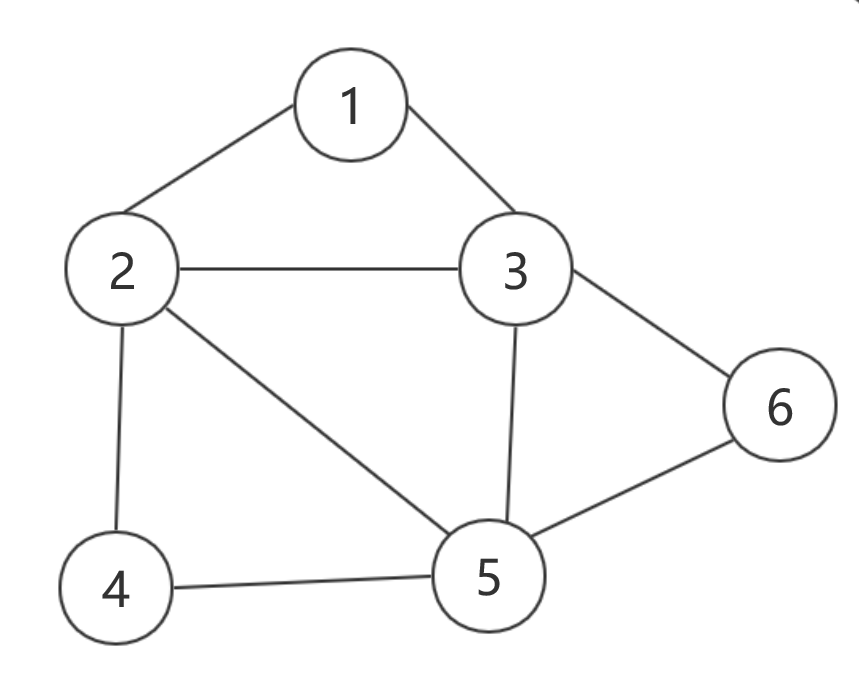
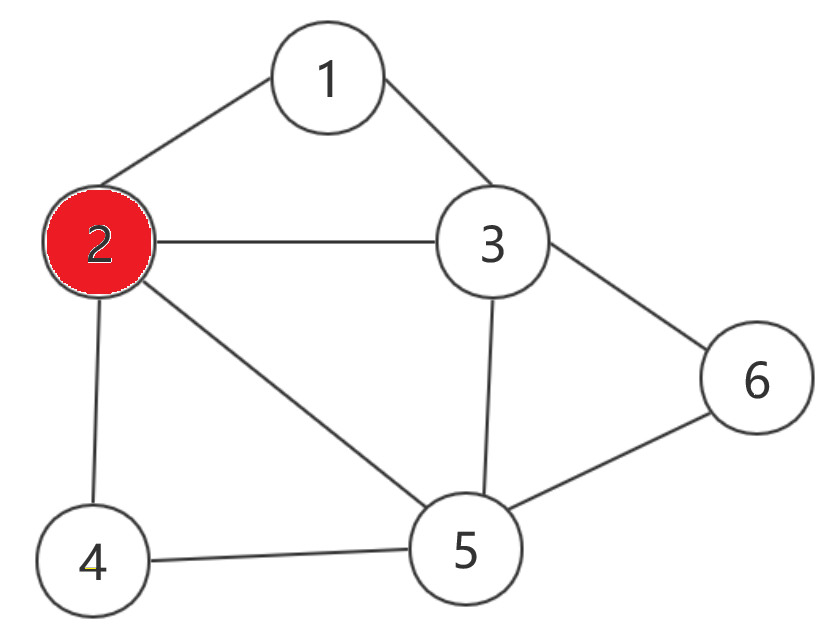 ->
->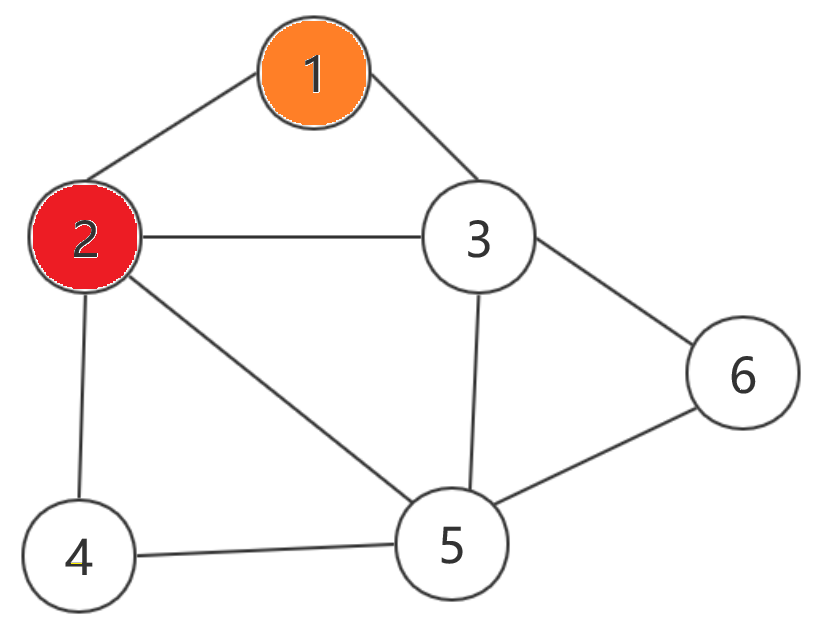 ->
->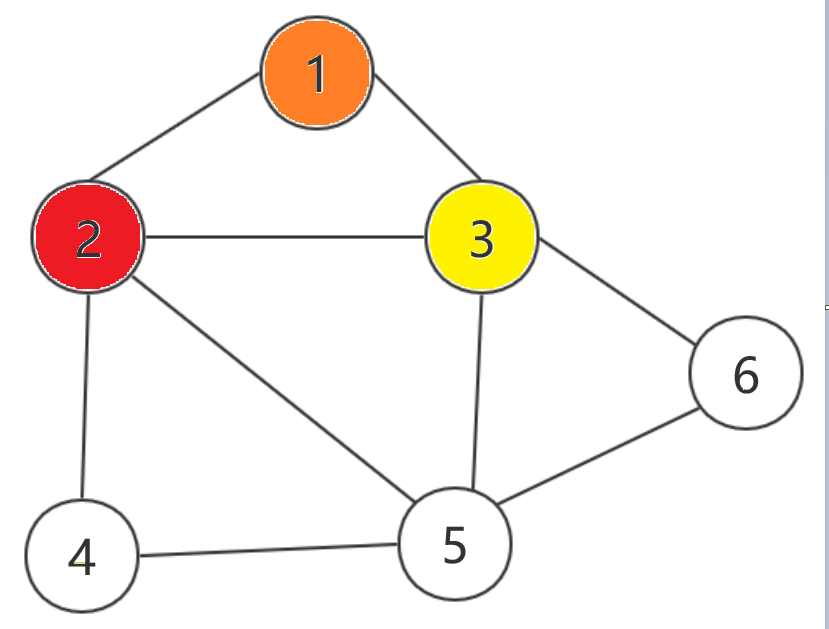 ->
-> ->
-> ->
->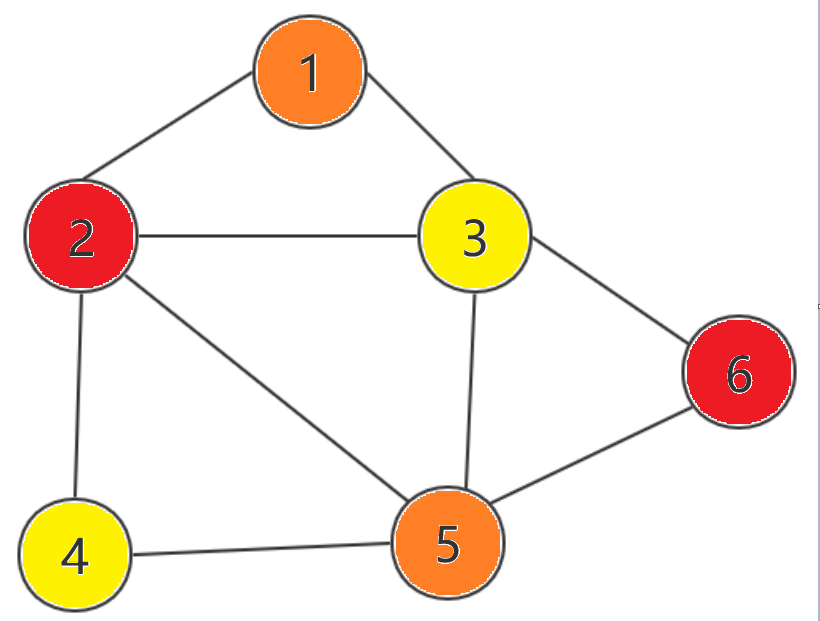
以上是个简单的图,我选用的步骤为:
1、找出度最大的顶点2、3、5(度均为4)。
2、对2着色C1,然后遍历相邻点
3、给1着色C2
4、给3着色C2,和1冲突,着色C3
5、给5着色C2,不冲突
6、给4着色C2,与5冲突,着色C3
7、给4着色C1,不冲突
从一次性上完一种颜色入手:
本来是想实现上一个想法的,但是在梳理的过程中,有一个新的想法,即是通过与以前运筹学课程上学过的方法结合,较为高效且高质量地解决问题。
步骤如下:
步骤一、给未上色点集中度最大的顶点上色Ci,生成可同色点集,为与该顶点不相邻且未上色的点的集合
步骤二、遍历可同色点集,给点集中的点上色Ci,每上完一个点就生成一次可同色点集,为与上Ci点不相邻且未上色的点的集合,直到可同色点集为空
步骤三、更新未上色点集,i=i+1,回到步骤一
例:以下是myciel3.col数据的图,求最少能上几种颜色。
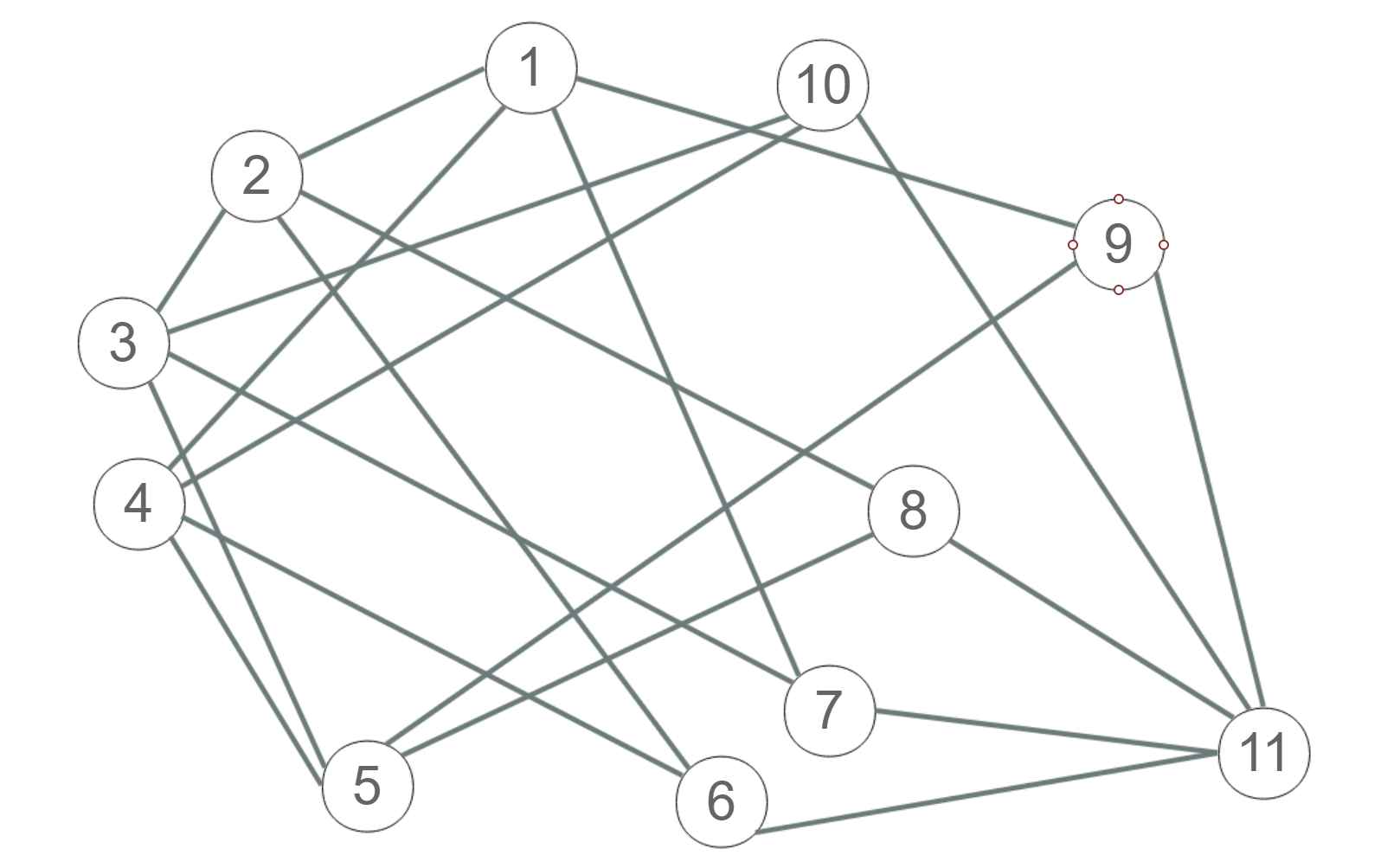
邻接矩阵为
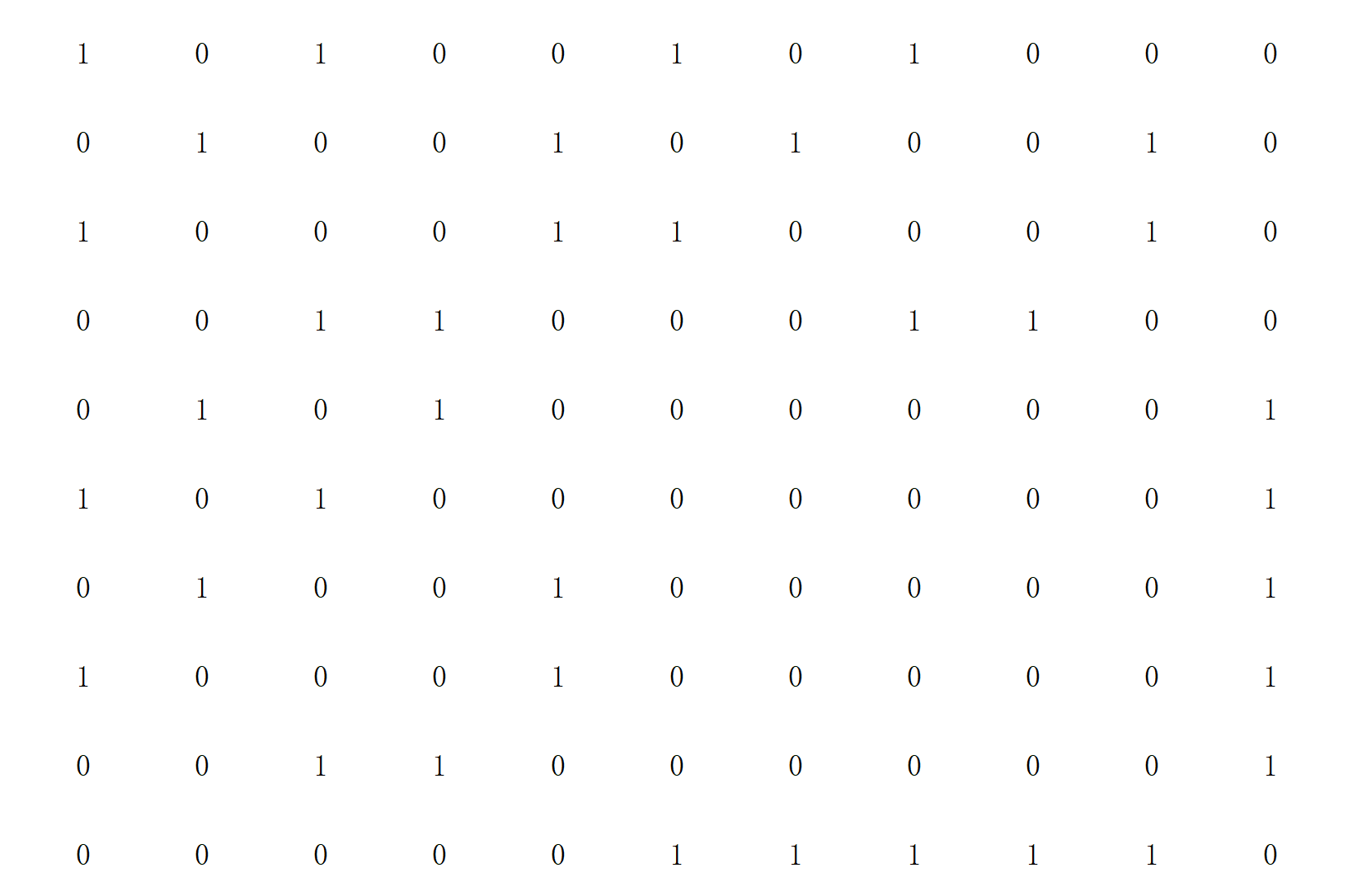
每个顶点的度为4、4、4、4、4、3、3、3、3、3、5,度最大的顶点为第11个顶点。
1、给V11上色C1,可同色集为{V1,V2,V3,V4,V5}
2、给V1上色C1,可同色集为{V3,V5}
3、给V3上色C1,可同色集为{}
4、给V2上色C2,可同色集为{V4,V7,V9,V10}
5、给V4上色C2,可同色集为{V7,V9}
6、给V7上色C2,可同色集为{V9}
7、给V9上色C2,可同色集为{}
8、给V5上色C3,可同色集为{V6,V8,V10}
9、给V6上色C3,可同色集为{V10}
10、给V10上色C3,可同色集为{}
11、给V8上色C4,可同色集为{}
上色后的图:

颜色使用了4种,和已知最优解一样。
三、python代码实现
1 def getAdjMatrix(path): 2 edge = [] 3 pointNum = 0 4 with open(path, 'r') as fp: 5 for line in fp.readlines(): 6 if line.startswith('p'): 7 pointNum = int(line.split()[2]) 8 for i in range(pointNum): 9 edge.append([0 for i in range(pointNum)]) 10 if line.startswith('e') and pointNum > 0: 11 edge[int(line.split()[1]) - 1][int(line.split()[2]) - 1] = 1 12 edge[int(line.split()[2]) - 1][int(line.split()[1]) - 1] = 1 13 return edge, pointNum 14 15 16 def main(): 17 edge, pointNum = getAdjMatrix(r'F: imFilm est.txt') 18 print('') 19 for i in edge: 20 print(' ', end='') 21 for j in i: 22 print(j, end=' ') 23 print(' ') 24 colorNum = 0 25 disabled = [] 26 27 # 初始化color列表,用以记录每个顶点的着色情况 28 color = [] 29 for i in range(pointNum): 30 color.append(0) 31 edgeNum = [sum(e) for e in edge] 32 for k in range(pointNum): 33 # 获取顶点最大度的索引值 34 maxEdgePoint = [i for i in range(pointNum) if edgeNum[i] == max(edgeNum) and edgeNum[i] != 0] 35 # 遍历最大度 36 for p in maxEdgePoint: 37 if p not in disabled: 38 # 选取还未着色且度最大的点p开始着色 39 color[p] = colorNum + 1 40 disabled.append(p) 41 edgeNum[p] = 0 42 # temp用于查找该颜色可用来着色的下一个顶点 43 temp = edge[p] 44 for i in range(pointNum): 45 if i not in disabled: 46 if temp[i] == 0: 47 # 为不冲突的顶点着色 48 color[i] = colorNum + 1 49 disabled.append(i) 50 edgeNum[i] = 0 51 # 增加当前颜色的禁忌点 52 temp = [x + y for (x, y) in zip(edge[i], temp)] 53 # 需要新颜色 54 colorNum = colorNum + 1 55 56 # 每个顶点都已经着色 57 if 0 not in color: 58 break 59 print(color) 60 print(colorNum) 61 62 63 main()